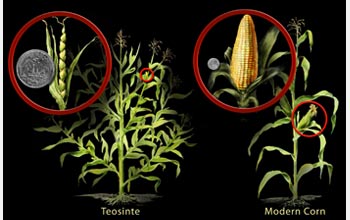Multimedia Gallery
New research says corn was domesticated from teosinte 1,500 years earlier than formerly documented.
Indigenous peoples living in the lowland areas of southwestern Mexico may have cultivated corn or maize more than 8,700 years ago according to new research. Molecular biologists recently identified a large, wild grass called Balsas teosinte as the ancestor of maize. The suppression of branching from the stalk resulted in a lower number of ears per plant but allows each ear to grow larger. The hard case around the kernel disappeared over time. Today, maize has just a few ears of corn growing on one unbranched stalk.
Credit: Nicolle Rager Fuller, National Science Foundation
Images credited to the National Science Foundation, a federal agency, are in the public domain. The images were created by employees of the United States Government as part of their official duties or prepared by contractors as "works for hire" for NSF. You may freely use NSF-credited images and, at your discretion, credit NSF with a "Courtesy: National Science Foundation" notation.
Additional information about general usage can be found in Conditions.
Also Available:
Download the high-resolution JPG version of the image. (651 KB)
Use your mouse to right-click (Mac users may need to Ctrl-click) the link above and choose the option that will save the file or target to your computer.
Related story: Wild Grass Became Maize Crop More Than 8,700 Years Ago



